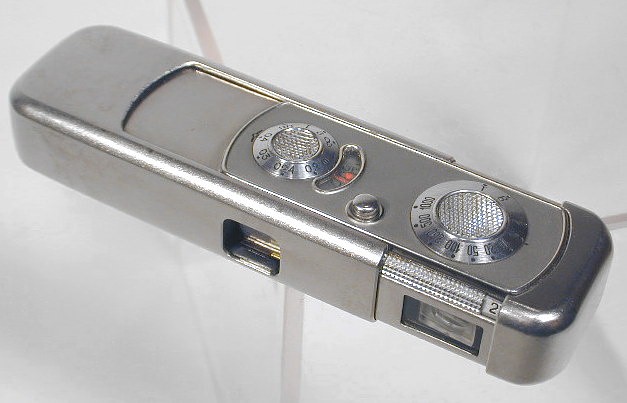Secret photography sometimes called "covert photography", but this is a term used mostly among professional investigators.
Sometimes normal cameras are used, but the photographer is concealed. Sometimes the photo camera itself is disguised or concealed. Some obvious element of concealment or great distance is generally needed to make such photography fall under the category of 'secret photography' rather than street photography or documentary photography.
It has been in use by British police since intelligence gathering on the suffragette movement in the 1900s.Some classic early U.S. street photography - such as that of Paul Strand on the Lower East Side - was obtained by fixing a second "dummy lens" to the camera, whereas the real shot was taken from the side. Although spy cameras small enough to fit inside a pocket watch had existed since the 1880s, since the 1950s advances in miniaturisation and electronics has greatly aided the ability to conceal miniature cameras, and the quality and affordability ofspy cameras has now greatly increased. Some consumer compact digital cameras are now so small that in previous decades they would have qualified as "spy cameras", and digital cameras of 5 megapixels or more are now being embedded in some mobile camera phones.
Some fine art photographers have displayed a fascination with the forms of secret voyeuristic photography.
MINOX
The Minox is a subminiature camera. The Minox was invented by Walter Zapp in 1936.He became friends with Nikolai 'Nixi' Nylander and Richard Jürgens, and it was through discussions with these friends that the idea of a photographic camera that could always be carried came to him. Nixi Nylander also coined the name MINOX and drew up the Minox mouse logo. Jürgens funded the original project but was not able to get support in Estonia for production. Jürgens contacted an English representative of the VEF (Country Electrotehnik Manufacture) electrotechnical manufacturing concern in Riga.The original Riga-made Minox had a brass chassis covered in a stainless steel shell, which telescopes to reveal or cover the lens and viewfinder windows, as well as to advance the film. It was equipped with a parallax correcting viewfinder, which was coupled to a Cooke triplet type Minostigmat 15 mm/3.5 lens. The lens was capable of focusing as close as 20 cm, and, due to its small image size, provided such depth of field at full aperture that a diaphragm was deemed unnecessary. The maximum focus zone was about one meter to infinity. In front of the lens was a metal foil curtain shutter, which was itself protected by a window. These were advanced features at the time for any camera, regardless of size. Measurements: 80 mm x 27 mm x 16 mm; weight: 130 g.
Minox was acquired by Leica in 1996.
information from wikipedia.org
Sometimes normal cameras are used, but the photographer is concealed. Sometimes the photo camera itself is disguised or concealed. Some obvious element of concealment or great distance is generally needed to make such photography fall under the category of 'secret photography' rather than street photography or documentary photography.
 |
| Paul Strand: Wall Street, 1915 |
Some fine art photographers have displayed a fascination with the forms of secret voyeuristic photography.
MINOX
 |
| Minox B camera |
Minox was acquired by Leica in 1996.
information from wikipedia.org
I live neare VEF... I am proud to live niar history , near Minox ...
ReplyDelete